Worms In Turtle Tank: Is Your Turtle Affected? Deworming Guide
It is not uncommon to find worms in your turtle tank. You’ll probably start fearing that these worms may harm your pet. Or your turtle may have been infected by internal parasites. What could these worms mean?
Worms in turtle tank are simply detritus and planaria and appear as wriggly white or red worms in your turtle tank. They usually occur when you have a dirty tank.
If you see them, it means you haven’t been performing frequent water changes, you have dirty filters, an accumulation of organic waste inside the tank, and uncleaned driftwood.
In this article, you’ll learn more helpful information about worms in turtle tanks, including tips on how to get rid of them.
Worms in turtle tank: is your turtle affected?
Contents
As we have mentioned above, worms in your tank result from a dirty tank. These small detritus and planaria worms are completely harmless to your turtle. They do not mean your pet has a parasitic infection.
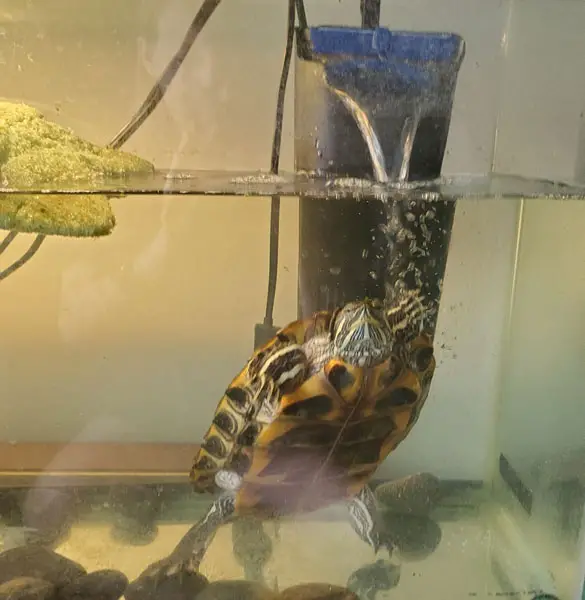
Let’s get to know more about these worms below.
What are detritus worms?
If you’re seeing thin, white worms wriggling in your turtle tank water column, or substrate, they’re most likely the detritus worms.
These worms belong to the same family as earthworms and leeches. There are thousands of detritus worms in turtle tanks that come in various colors (not just white!), including brown, black, red, etc.
Tube worms, tubifex worms, and those red or brown worms you may have encountered in your tank are all detritus worms and mean no harm to your pets!
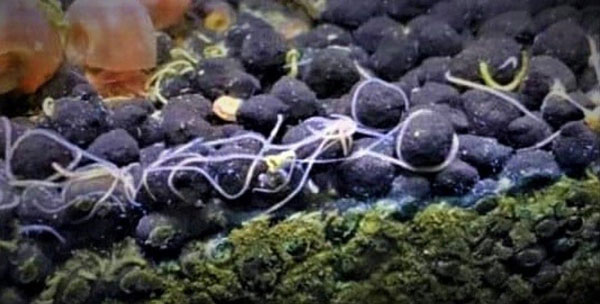
A typical detritus worm grows up to an inch long. The adult worms are excellent hitchhikers and can easily find their way into your tank by attaching to the driftwoods, sand, substrates, or even fish.
Note that these worms like to confine themselves below a substrate or in the filter in your water tank. However, they’ll climb up to the tank surface as their numbers swell and there’s a scarcity of oxygen and supplies.
Thus, if you’re seeing these worms wriggling around in your tank, it means their numbers have rapidly outgrown, forcing them to come out.
So, what causes their rapid growth inside your turtle aquarium? Other than hitchhiking, the most likely reason for the presence of these worms in your tank is overfed tanks. The worms like feeding on leftovers and wastes produced by tank inhabitants.
Remember, turtles are messy eaters and always leave plenty of food particles inside the water after every feeding session.
Are detritus worms harmful to turtles?
No, detritus worms are completely harmless to your turtles, and there’s no need to worry if you see them swimming in your aquarium.
Additionally, these worms don’t feed on turtles and will not transfer any illnesses to them. Most turtle tanks have these worms, and they cause no harm to the turtles or fish inside.
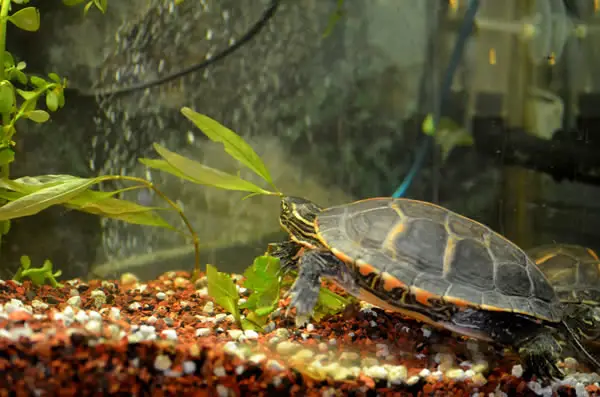
Amazingly, these worms make live foods for your turtles. Yes, most turtles, as well as fish, feed on them.
If you see many of them in your tank, reduce the food you give your pets. This will make them hungry and resort to eating those worms.
Are detritus worms harmful to humans?
No, detritus worms are not harmful to humans. The little worms eat waste and algae in turtle tanks, not humans. Thus, you don’t need to get worried that they might hurt you or your loved ones.
How do you get rid of detritus worms in the turtle tank?
Getting rid of these worms in your turtle aquarium is easier than you can imagine. But we don’t recommend getting rid of all of them as the worms are decomposers and play an important role in your tank.
The most effective way to control the population of these worms is to avoid excessively feeding your turtles. This will help reduce the amount of leftover foods, which turn into worms breeding grounds.
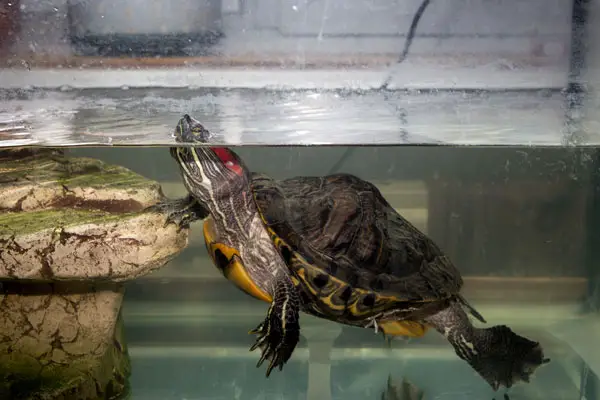
You may also consider feeding your turtles outside the tank to reduce the amount of food particles in the water.
Other ways to control the population of these worms involve making frequent water changes to ensure clean water, avoiding overcrowding your pets, and installing great filtration in your tank.
What are planaria worms?
Planaria is the other type of work likely to be found in the turtle tank. However, this one is less common than detritus. Planaria worms are pretty small and tend to grow up to 0.6 inches in length, so you can easily miss them. They become more visible when they grow in large numbers.
When their numbers multiply, these worms can infect your aquarium if not eradicated. They’re, therefore, considered pests by turtle owners.
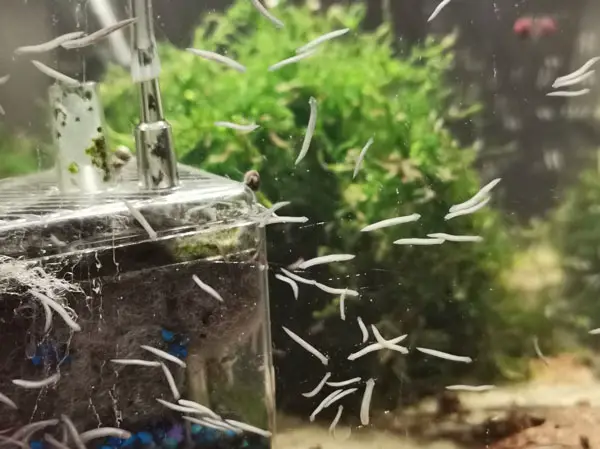
Want to know what’s weird about these worms? You can cut it into pieces, and they’ll regrow from the pieces.
With this in mind, crushing or smashing them inside your aquarium isn’t a wise method for getting rid of them.
Are planaria worms harmful to your turtles?
Yes, planaria worms are harmful to your turtles. Unlike the detritus worms, the planaria are parasitic. They can leave inside your pet’s intestines, where they can cause severe harm.
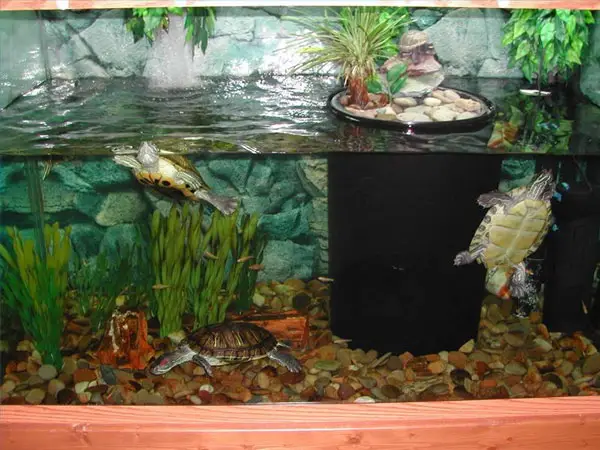
You can easily tell if your turtle has this parasitic infection by looking for symptoms such as bloating, weight loss, loss of appetite, diarrhea, dehydration, vomiting, and passing undigested food.
Also read: Turtle Eye Infection
How to get rid of planaria worms in turtle tank?
If you spot planaria worms in your turtle or fish tank, we advise you to act immediately to save your turtles. The best way to get them off your tank is to clear the entire tank.
Put the turtle in the bucket and then remove everything from the tank. Do a deep scrub of the tank and all the other items you plan to return to the tank.
Remove all the gravel and live plants inside the tank and replace them with new ones, as removing the worms from these objects can be difficult.
Unfortunately, this method will not work if the parasites find their way into your turtle’s internals.
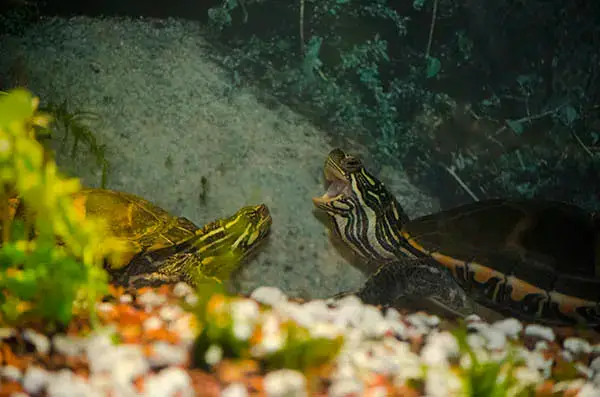
You can also try the baiting method, where you put the bait in a bag and then turn off the lights. The worms will most likely swim towards the meat inside the bag.
Give them a few hours, and then pack your bait alongside the worms you’ve caught. Repeat this until you notice a significant reduction in the worms’ population.
Other methods include using fish that eat planaria. However, not all fish eat these worms, so this method might not be highly effective.
There are also worm-killing chemicals such as praziquantel, metronidazole, Paraguard, Levamisol, and PrazilPro, to name a few. These parasite removal chemicals kill the worms without harming your turtles.
What do worms in turtle poop mean?
If you see worms crawling out of your turtle’s poop inside the tank, your pet turtle could be suffering from an internal parasitic infection.
The most common parasites likely to affect aquatic turtles include nematodes (similar to roundworms in humans), roundworms, hookworms, fluke works, tapeworms, and protozoa.
After you see worms in the turtle poop, look for these additional symptoms of internal or intestinal parasite infections: weight loss, diarrhea, loss of appetite, vomiting (of worms), the passing of undigested food, and lethargy.
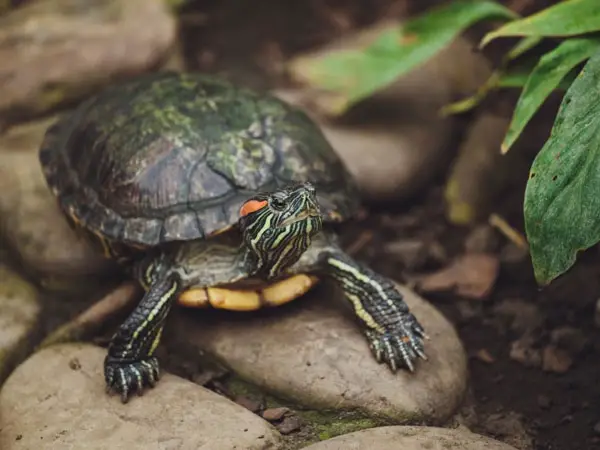
If you notice 1-3 of these symptoms, we advise you to take your pet to the dentist as soon as possible.
You may not know this, but parasitic infections can range from nuisance to life-threatening, so getting professional care is highly recommended.
How does my turtle get these parasites?
The most common way parasites enter the turtle’s body is through dirty water. Putting water from an unclean source in their tank will also increase the risk of parasitic infection.
Not cleaning your turtle tank or aquarium regularly makes it a favorable breeding ground for bacteria and parasites.
Also, parasites get to your turtle’s internals through the food you give them.
A turtle can also get a parasitic infection from another one if they’re kept together in the same tank. A turtle that comes into contact with an infested turtle’s feces will ultimately cause the spreading of these parasites.
It is also worth noting that parasites are more likely to multiply and infest your captive turtle due to the small tank you put your pets in (unless you clean the tank regularly).
How do I keep my turtles safe from parasites?
The BEST way to keep your aquatic turtles safe from parasites is by keeping their aquarium consistently clean.
Make frequent partial water changes to help keep your tank water fresh and clean. Maintain the ideal temperatures and humidity for optimal living conditions.
Get a canister filter, as it’s more effective at keeping water fresh for longer than the aquarium filter models.
Make sure you remove uneaten foods and waste from your turtle tank as soon as possible.
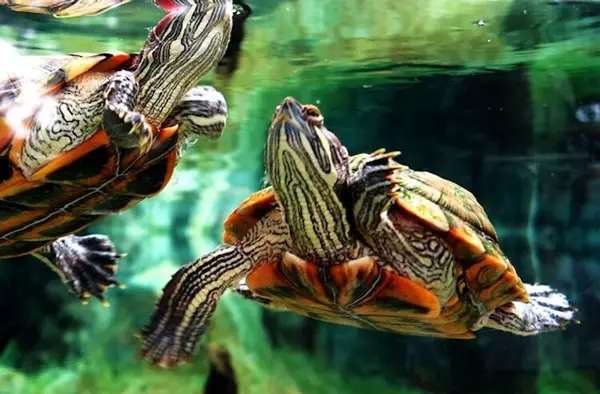
Do you suspect that some water source or type of food could be the source of these worms affecting your turtle? If yes, avoid them completely and opt for a safer water source or food.
If the tank has already been infested, consider thorough cleaning and drying the tank food and water bowls, accessories, and all the other items in the tank. And be sure to wear disposable gloves as these parasites may get to your body as well.
You can also use bleach to clean to kill off those parasites. But make sure you thoroughly rinse your tank and accessories before reassembling everything back in place.
FAQs:
Red worms are usually detritus worms, and getting rid of them in your tank is easy. You just need to avoid overfeeding your turtles to keep the turtle and fish food bits and waste low in the tank. With no food source, the worms will not reproduce. Additional methods for removing these worms include frequent water changes, installing a more powerful filtration system, and avoiding overfeeding your pets.
The best way to deal with parasitic infestation in your pet turtle is to take it to your vet for professional veterinary care. The vet will do a microscopic examination of a sample of the pet feces to determine what type of parasite affects it and then treat it accordingly. On your part, you should focus on thoroughly cleaning your tank to prevent the parasites from re-infesting your little pet.
Related: Can Turtles Flip Themselves Over?
Final Thoughts
If you see small worms in your turtle tank, there’s no need to panic. These could be harmless detritus worms that have populated your tank due to excessive leftover food and waste in your tank. The worms can be in red, red-brown, black, or white colors.
However, worms in your turtle’s poop could signify internal parasites. You should get your pet to your vet immediately before it can get severe infestations! Parasitic worms inside your turtle intestinal tract can cause severe harm and even cut their life short if not attended to.
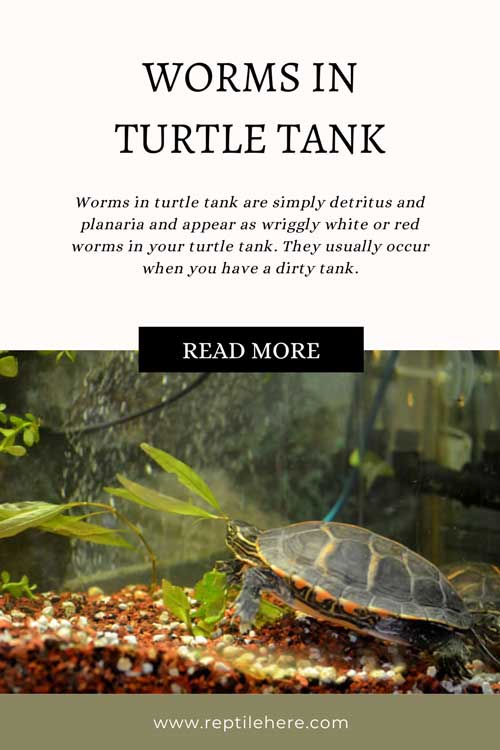

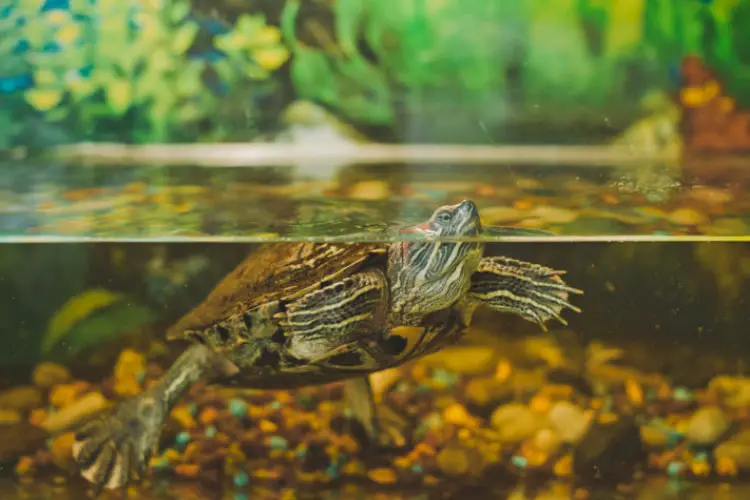
Any Idea of what a very super tiny black worm could be? It almost looks like they eat from both ends.
If anyone has an idea do I can treat my red eared turtle? Please, and thank you so much.
Amy H.&
Mr. Turtle